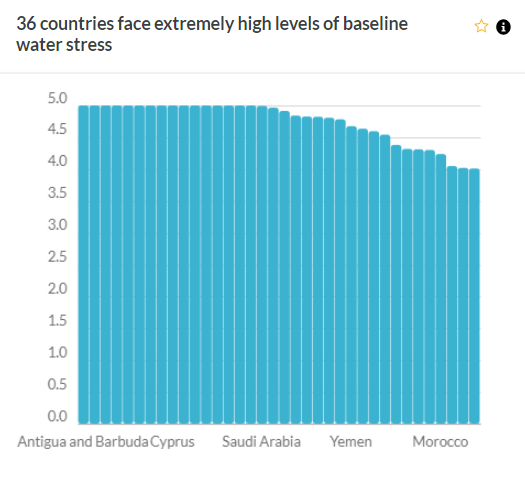New data platform to help visualize and understand how water intersects with other global issues
- April 16, 2018
- Posted by: administrator
- Category: Environmental, Global, Technology & Innovation

A new online platform which pulls data from near-real-time satellites and ground sensors will enable users to visualize and understand how water intersects with other issues.
World Resources Institute and more than 30 partners, including Google Earth, have launched Resource Watch, a dynamic platform that provides trusted and timely data which leverages technology and near-real-time data on a global basis all in one place.
Launched at the event “Open Data in a Closing World” at the National Geographic Society in Washington, D.C., Resource Watch is an easy-to-use monitoring tool that curates and visualizes reliable data.
“The world’s most vexing sustainability challenges – climate change, food security, population growth, water scarcity and more – are deeply intertwined. Yet too often people and data are stuck in silos,” said Janet Ranganathan, Vice President, Science and Research, World Resources Institute.
“Now, Resource Watch allows users to see how issues intersect by visualizing and overlaying data in new ways. It helps analysts and decision-makers cut through the daunting mountain of data to find the signal in the noise.”
Users can explore and overlay datasets on climate change, state instability, urban infrastructure and more
Resource Watch features hundreds of data sets on the challenges facing human society and the environment. Users can explore and overlay datasets on climate change, poverty, state instability, urban infrastructure and more. They can also download, analyze and visualize the data in a wide range of formats.
The Resource Watch platform is free for all users and will continue to grow stronger and smarter as WRI adds new data layers and functionality every week.
“Until recently it wasn’t possible to monitor the health of Earth’s critical resources in both a globally consistent and locally relevant manner,” said Rebecca Moore, Director of Google Earth. “Now with satellite data, cutting-edge science and powerful cloud computing technology like Google Earth Engine, we can achieve an unprecedented understanding of our changing environment and use that to guide wiser decision-making. Google is excited to partner with WRI on Resource Watch and the new global power plant database, putting this vision into practice, and this data into the hands of those who can take action.”
Ambassador Henne Schuwer of the Kingdom of the Netherlands, who attended the launch event, commented:
“We need to stop taking water for granted. Failure to manage water in a sustainable, transparent and inclusive way, and neglect or misuse of our water resources gives water the power to harm, divide or even destroy societies.”
“With Resource Watch, governments, businesses and citizens will have a new tool to visualize and understand how water intersects with other issues to help create a healthier and more secure society.”
Pulling data from near-real-time satellites and ground sensors, the system helps users track and visualize fires, floods, landslides, air quality, natural disasters and other world events.
Kevin Rabinovitch, Global VP Sustainability at global food and beverage giant Mars Incorporated commented:
“Mars’ Sustainable in a Generation Plan is driven by credible data. Resource Watch makes it easier to find and use data to guide the implementation of our plan in a way that will advance impact at scale.”
Resource Watch’s underlying data infrastructure (API) is open source, meaning that others can build on it to create their own custom, self-branded applications.
Resource Watch will enable any organization to leverage the data revolution for their own causes. The Partnership for Resilience and Preparedness (PREPdata) is the first example of a custom interface to improve access to climate data and help communities build climate resilience, and others are being developed.
Click here to visit the Resource Watch platform
